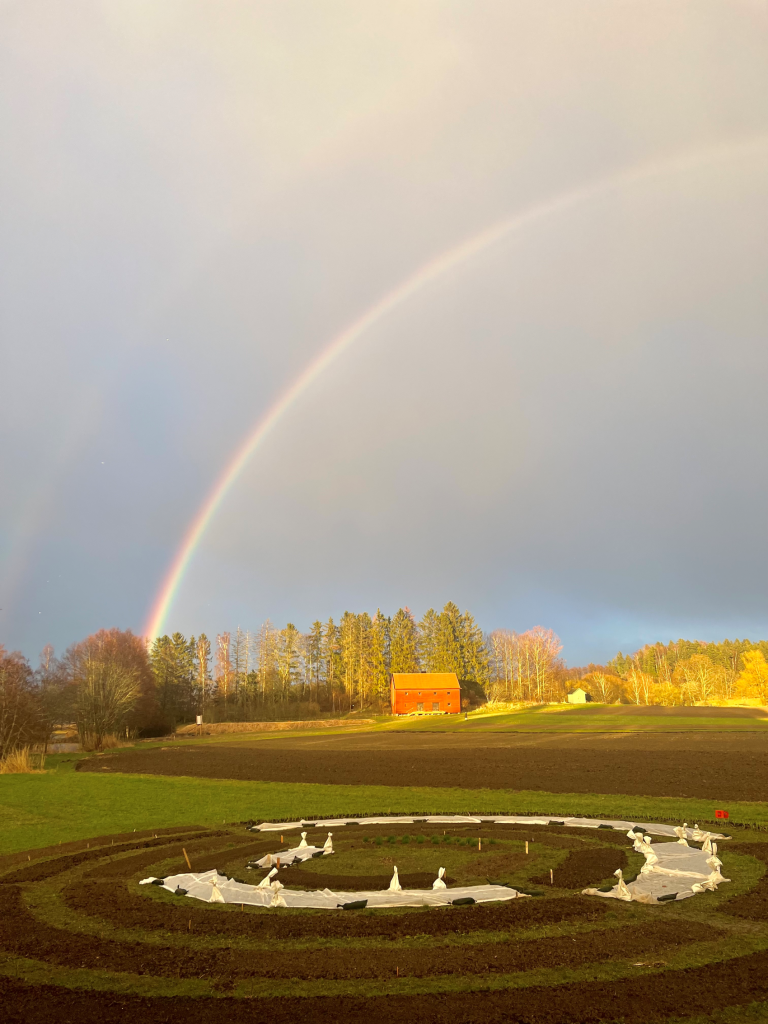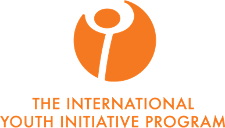Greetings from Ytterjärna in full bloom!
The moment is here! The leaves have bursted out of the trees, dandelions are spreading their seeds in the wind and we are harvesting our first heads of lettuce. Swedish spring arrives late, but when she does, the transformation is absolutely stunning.
During the last month the Yippies moved from being participants to organizers, in the module called the Self Designed Curriculum. They had the opportunity to create their own program, which resulted in a wide variety of activities. Some Yippies joined in on many of the activities, others followed their own rhythm and focused on their personal projects.
Last week we rounded off the Self Designed Curriculum with a full week of Personal Initiative Presentations. Even though the Personal Initiative is an individual project inspired by everyone’s own questions, the group was reflected in every one of the presentations. Whether through insightful conversations, practical help or actual collaboration, the community played an important role in shaping the different projects.
This newsletter will talk you through the self designed curriculum and its various activities. You’ll find articles about Nature Observation, Fertility Awareness and Hormonal Bodies, Cyanotype Photography, Creative Writing and three Personal Initiatives. Reinoud shares with you his thoughts and reflections on 15 years of YIP. Lastly, you’ll find the link to The Mug’s Journey, a video about life in YIP.
Happy reading!
Warm spring greetings,
Tessa
In this newsletter you will find:
– Nature Observation – by Peter Jacobs
– Creative Writing – by Noam Marei
– Fertility Awareness and Hormonal Bodies – by Farranika Barnum
– Cyanotype Photography – by Miriam Vincent
– Personal Initiative: The Art and Science of Breathing – by Katie Bremner
– Personal Initiative: A Life Reflected – by Billy Mills
– Personal Initiative: Embracing Home – by Nell Lenoir
– 15 years of YIP – by Reinoud Meijer
– The Mug’s Journey – a video made by Dowon Kim and Noam Marei
Nature Observation
– Thomas Lüthi and self organised –

The nature observation we did during our self-designed curriculum was a kind of observation practice using the Goethean approach. I grew up in the woods, immersed in nature, but after a couple sessions of this I realized there is still much left to be discovered. The first session of nature observation I joined we stared at a dandelion for a half hour. I was not expecting it to be so interesting, I could have stared at it longer. I’ve seen dandelions all my life and often even up close as I lay in the grass, but truly observing one and really taking in its essence makes it feel new and exciting again. The closer I looked, the more I saw. From the five points at the end of each petal, to the curled tips of the styles, and the purply colors on the stem. It was fascinating. The second session I joined, we visited Thomas Lüthi, a very experienced nature observer and biodynamic practitioner. He was kind enough to share his time with us and guided us past a series of different Linden trees and we observed the different patterns in their growth. We saw trees that had been altered in various ways and began to piece together why and how they appeared the way they did, from the angle of the sun and human interference, to the plants that grew nearby, there are many considerations to take into account. Although I am already an avid nature lover, I found renewed interest in the small things that perhaps I see every day. Do I really really see them though? This is a new question I have for myself.
by Peter Jacobs
Creative Writing
– with Paul Matthews –
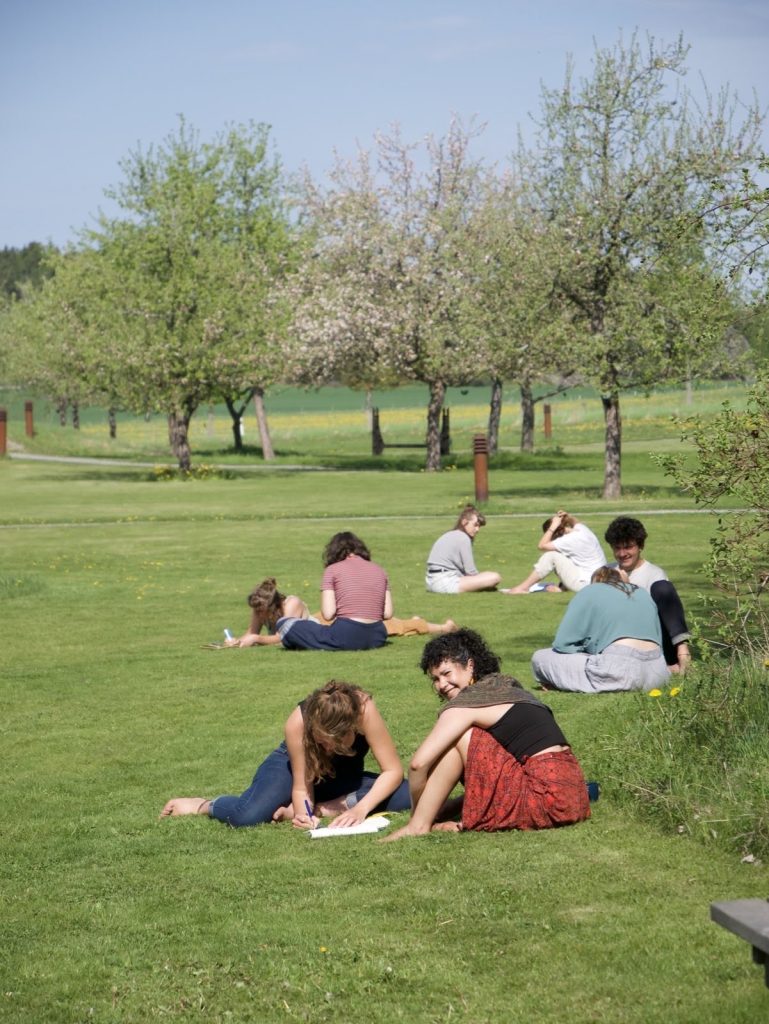
Writing,
never stopping… Maybe that’s the key… Who knows.
Paul would know! He seems smart. Full of answers. Creative answers. He unlocks my library of words. Finally they are able to go on a walk-outside. Get some air. Feel the sun. Cleared from dust by an unlocked door.
Will they come back, I wonder? These wild words…
I must wait, because now they are free and instead I am sitting in the library.
I start to read. Perhaps I can welcome some new word-families into my library. I still have room. I want to give space for the “infact’s” to play with the “indeed’s”. To have “perception” drink tea with “experience”.
And here it is, a silent knocking on the door. My words are returning. It has become evening. Blue hour, just before everything turns into different shades of gray.
I stand up. Grateful for my encounter with the words. I lock the door again. But, I want to remember where the key is.
I put it under the doormat, with a note saying:
“Ask Paul Matthews!”
I don’t think I want to say much more. For next year’s Yippies, make sure to invite him again. I highly recommend this course. And for everyone else, if you ever see his name somewhere, buy the ticket, or the book, run to the course… Whatever, it is worth it!
by Noam Marei
Fertility Awareness and Hormonal Bodies
– with Disa Mineur –

During the Self-Design Curriculum, we invited Disa Mineur to teach a day’s course and workshop on Fertility Awareness and Hormonal Bodies. Disa is a trained sexual health advisor and holistic reproductive health practitioner. The vast majority of young adults in today’s world, including those of us at YIP, have had incredibly poor sexual and fertility education in school, and are instead subject to the social/societal pressures and constructs around sexual and hormonal health, pleasure and sexual freedom. We invited Disa so we might learn about our own bodies and natural rhythms, and unlearn harmful constructs, myths, and taboos around sex, pleasure and fertility so that we may better navigate young adulthood with freedom, confidence and knowledge about ourselves and each other.
In the morning before fika, Disa began with an introduction into fertility awareness and some insight into the 24-hour male hormonal cycle. She then dove into the female reproductive system and 28-day hormonal cycle, where she described the purpose and function of hormones such as progesterone, testosterone, estrogen, prolactin and serotonin. With the help of supplemental visuals, she took us through the four stages of the menstrual cycle, and the fertility, hormones, and habits of each phase. We learned about how to listen to and support our bodies’ needs, which differ depending on the time of the month. We looked at the truth of the function and detrimental effects of hormonal birth control pills on our bodies, and she recommended some further reading and watching material for more information, including ‘Recapture the Rapture’ by Jamie Wheal, ‘Cupid’s Poisoned Arrow’ by Marnia Robinson, and the movie ‘The Business of Birth Control’.
After fika, Disa hosted a workshop entitled Harmonia, where she took us through some health-bringing habits for us to integrate into our routines. A big focus of this workshop is that pleasure is your compass. Not eating junk food pleasure, not even specifically sexual pleasure but the pleasure of feeling alive. She spoke of Practicing Disobedience, of letting go of trying to be perfect and reaching inside to understand your instincts and your true, authentic self. We learned the importance of “surfing your cycle” — the art of living life according to your body’s natural rhythms, including exercise, work habits, sex, diet, and more. She introduced us to the idea that we are bioelectric beings, and why grounding on the bare earth or in water is so important to our physical health. We spoke of food as medicine, breathing as a primary nutrition source, the importance of sun and sleep and the circadian rhythm.
After lunch, Disa held a space for any questions and interests we may have, and then she dove into the differences between reproductive sex and bonding sex. She introduced us to the sexual practice of Karezza, a technique of sex that is not used for the purpose of satiation and release, but for bonding and intimacy with your partner. We talked about pleasure and intimacy, in sexual and non-sexual contexts.
Disa was only with us for a day, but much of the knowledge and wisdom she brought was entirely new for most of us. It was empowering and liberating to learn more about the rhythms and needs of our bodies and how to support them. It was a beautifully loving and accepting space where we were able to have open and honest conversations around these important topics. We all learned a lot, and I feel newly able to move through the world with a sense of freedom and agency in my body.
by Farranika Barnum
Cyanotype Photography
– with Iliyana Grigorova –
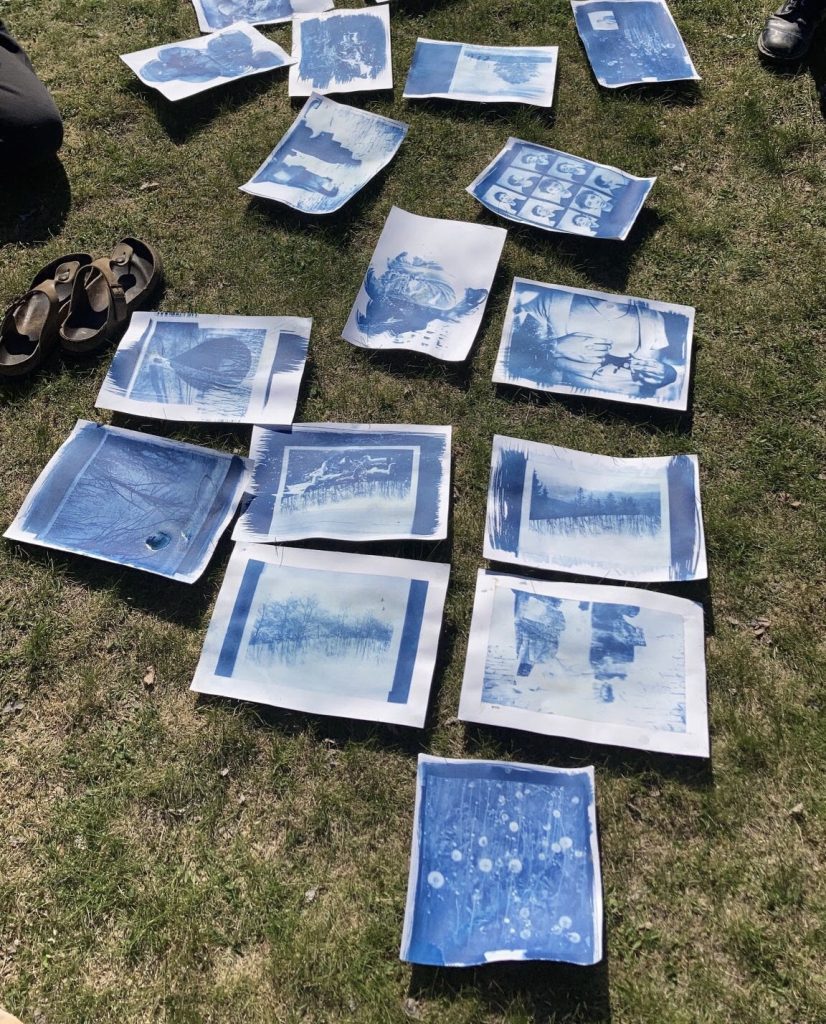
Playing with light and shadow
The green of my page turns blue in the face of the sun
Carefully placed, the petals dance with the beams
some can pass through, others reflect
Playing with light and shadow
Leaves and blossoms leaving their mark
Shapes traced elegantly in white silhouette
Moulding the touch of the sun
our bodies curled and stretched
A sheet once white
now imprinted by our forms
Hands reaching
Beings dancing
Now, captured in blue, we flutter in the wind.
The cyanotype workshop with Iliyana was a wonderful experience.
We started off with choosing negatives that she had printed on see through sheets. There were lots of exciting possibilities with layering faces or trees or ducks or fish.
We placed our images onto the paper Iliyana had prepared for us. It was coated in chemicals that are sensitive to sunlight, so here we had to be in the shade and quick. Then all we did was place it in the sun and watch the magic happen. 10 minutes later we were washing the paper, cleaning off the chemicals and fixing the image.
Soon the grass was full of drying blue pages and happy Yippies.
Next we did a similar process but making photograms. Instead of using negatives we gathered objects and plants, placing them on the page, giving an inverted silhouette.
Taking it further we spent an afternoon printing onto our clothes mixing the use of flowers and negatives together. We printed on shirts, singlets, jeans, overalls, skirts and more. We also made body prints on big sheets, creating different forms and movements, puzzled together on the fabric.
At the end Iliyana created an exhibition of all the pieces we had made together. It was a beautiful sight seeing the sheets and rows of paper waving in the wind as they hung between the trees.
My favorite thing was the feeling of all of us there together enjoying the creative flow, inspiring and helping each other, laughing, singing and playing with light and shadow together in the sun.
by Miriam Vincent
Personal Initiative – The Art and Science of Breathing
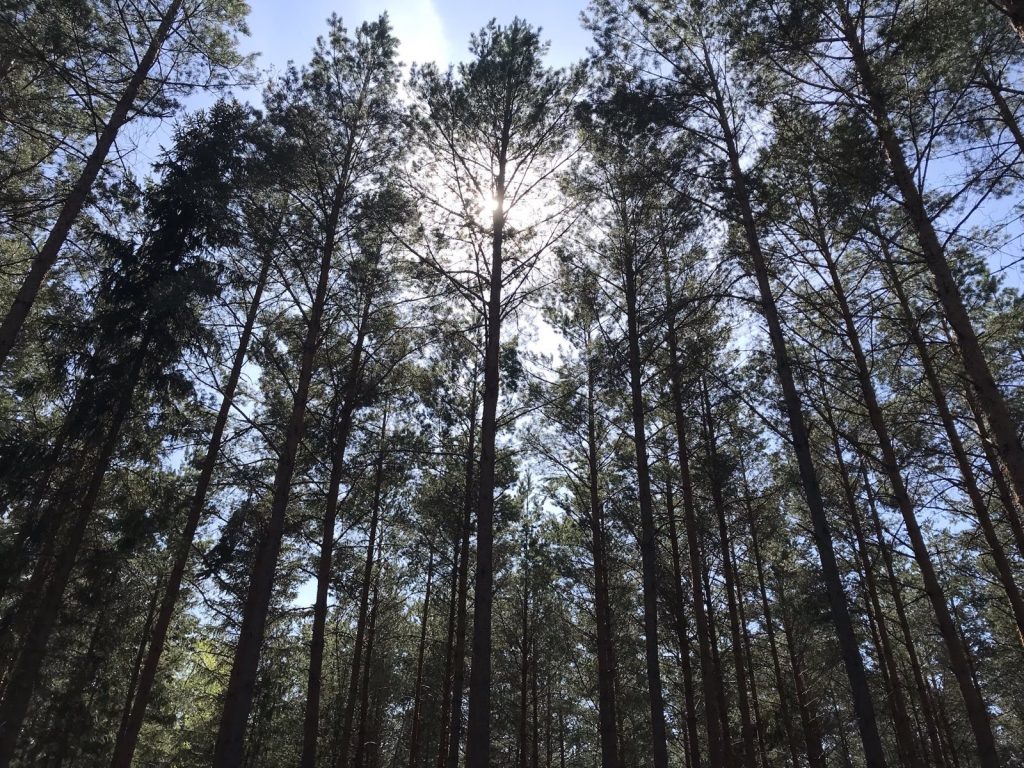
Overall, the Self Designed Curriculum block has been a really exciting time for me to dive into interests that I have desperately wanted to learn about for a long time. I dived deep into the breath world, where I started re-reading a book called ‘Breath’ by James Nestor. I watched many videos of breathwork teachers speaking about their specific interest in this field, whilst I read and highlighted their transcripts. I would then trial out and record my experience of the sample breathwork technique that they offered at the end of each video. The second week, I went on a breathwork summit where I practiced many different breathing techniques from experienced practitioners in this field. Towards the end of the block, I did some experimenting with breathing solely through my nose by mouth-taping when sleeping and exercising. I hosted a short breathing session with a few others, and I tried to organize and sort through all of my learnings from the whole month. The whole process involved a mix of learning through thinking, feeling and doing, about a huge rage of breathing topics – like how the breath can be used to improve our physical, psychological, general health, how it can be used to access higher consciousness, the basic science behind it all, and what’s going on in the breathwork world.
To summarize, I have been able to explore something that I’d been meaning to prioritize in my life for a long time now, and despite my squirming at even the thought of public speaking, I was grateful to have had the opportunity to push myself to share my personal initiative as a presentation and witness everyone else do that too.
by Katie Bremner
Personal Initiative – Embracing Home
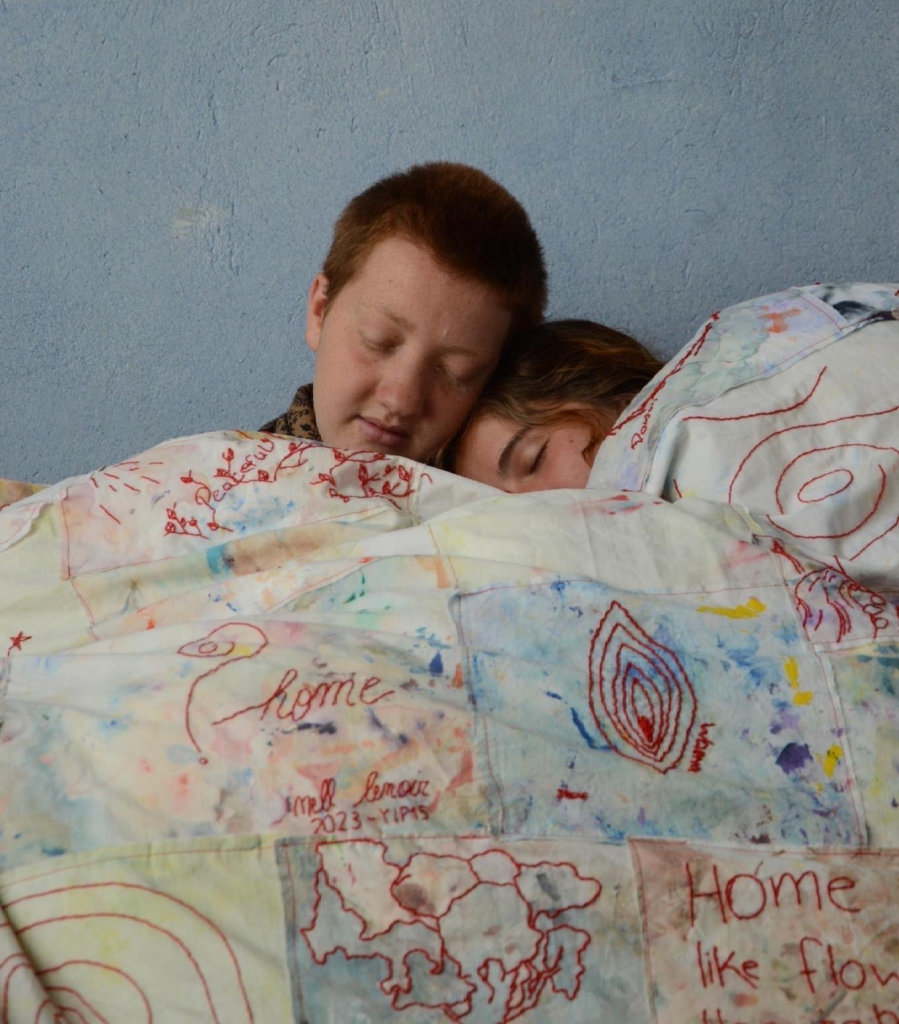
What does home mean to you? Where is home for you?
Where do I belong? Where do I feel grounded?
I have carried these questions for the past seven years wandering across Europe, living here and there, following courses, working, traveling, living in small communities… In every place, everything was new. New house, new housemates, new studies, new hobbies, new mattresses, new landscapes, new trees, new weather, new cuisine, new smells, new birds, everything. New homes I had to create. Very little was consistent. I learned to adapt and to fit in places I arrived at. But over the years, for every new home I created, it feels that I’ve stretched myself more and more, so much that I somewhat lost myself in the process. Losing myself, not knowing what is mine, what I like, what is important for me, what my passions are, what I want and what I care about.
And I got very tired.
As I was visiting friends and family during the winter break, I realized yet again that I feel at home with them, for the short time I am there. But once I step out of their front door leaving for the next travel, I cannot turn back and look at that place as home anymore.
On the 1st of January 2023, I shared that thought with a friend I had recently met. I told him:
“I think I find my home in people”. A and he answered “But… do you feel at home in yourself?”
I’ve carried this question within me for a while now and hearing it out loud from someone that, in some ways barely knew me, somewhat struck me. Once I stepped foot in Sweden again, I took the decision to explore this question.
For five months, I gathered a collection of people’s individual feelings about what home means to them. And forty-two people (yippies, OTs, and contributors) have answered this question and transcribed the essence of their answer onto saved scraps of fabric from a painting course.
Through those months, I had the chance to witness their emotions, confusion, melancholy, tears, laughs, and dreamy heads. How each would pick their fabrics very differently – some would pick the first one of the pile, some would look through the whole thing several times, some would make little piles with the yeses, the maybes and the nos. Some stories were very short and others very long. For some, it was the first time thinking about this topic, for others it had been there their whole life. Many topics came back, and some were very unique.
Warmth, comfort, safety, circle.
And it is with these themes in mind that I put together all the scraps of fabrics after I embroidered them, into a blanket. The blanket of home. So that we can embrace home but home can embrace us too. I now feel as if I have been reading a very captivating book, so intriguing that I want to know the end, yet once I finish it, I wish it hadn’t ended.
Now, as some of you readers may know, we apply to YIP carrying a question that matters to us. A question that we carry in our heart and want to explore throughout the Swedish seasons here in Ytterjarna and beyond. It was only at the end of the Personal Initiative Presentation week that I remembered that question – how can we connect people and their stories together and create a sense of community through the medium of arts? And as I gazed at the blanket floating in the wind, I realized how each of their stories were (literally) sown and entangled with one another. How I unconsciously brought their stories together which will soon be outside in the world to be shared and related to for others.
by Nell Lenoir
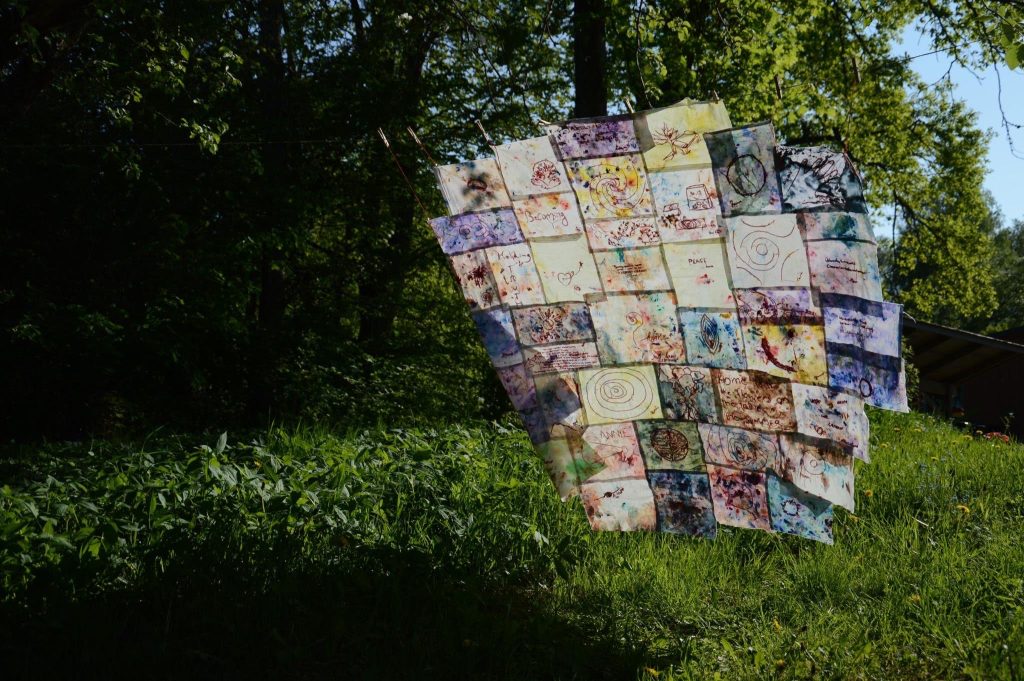
15 Years of YIP
– with Reinoud Meijer –
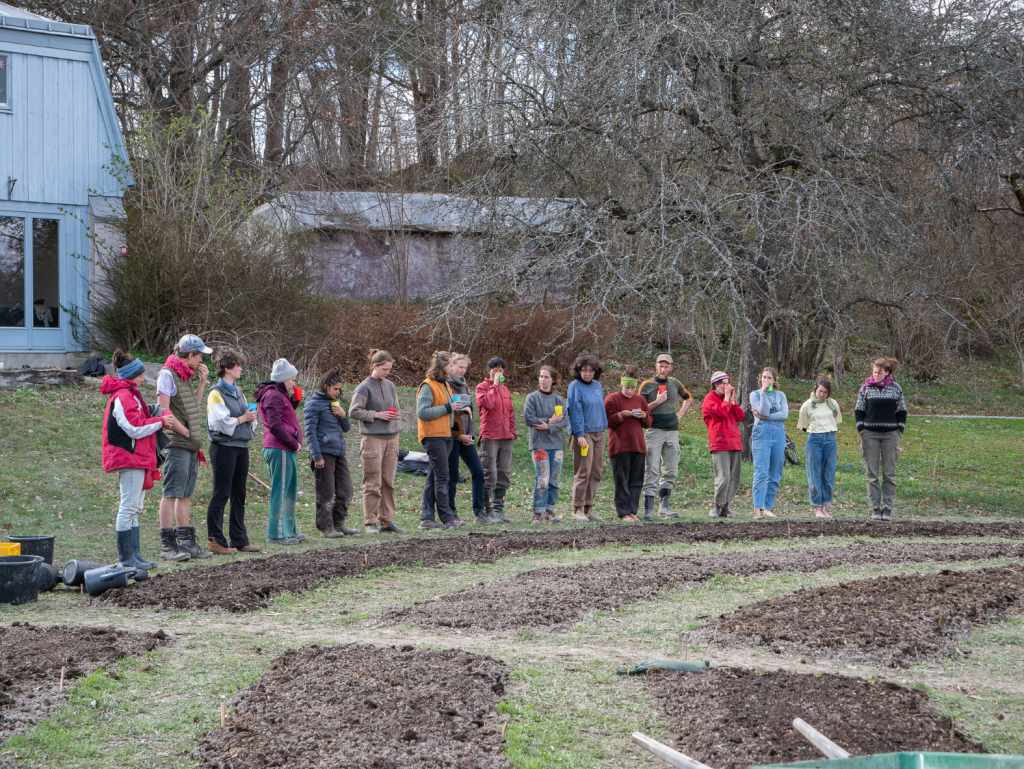
Allow me to share some thoughts and therefore a somewhat lengthy text.
The team recently finished its review and design period, in which we revisit the purpose and core of the program and to assess its value and need for the current time and circumstance.
In this time we also try to remind ourselves of some of the achievements and character of the work and what it has enabled over the past year(s) and formulate and design what we seek to support in the future.
In sharing it here, I hope it can re-connect us to what YIP and the initiatives bringing from it share in purpose and intention and to invite you for your support and engagement.
From the outset
As an initiative, YIP set out to be a program that would offer a lived and practiced form of the anthroposophical school of thought, somewhat in contrast to the highly intellectual and theoretical approach of which there was plenty at the time. We further wished to be more engaged in the social- and the heart-realm than the cooler intellect that others seemed to prefer. Our affiliation was with people like Ute Creamer, Orland Bishop, Nicanor Perlas and Vandana Shiva. People who placed themselves in the social ‘fires’ of our time and made an impact from the grassroots up, whilst basing their work on an integrated image and understanding of the world.
We wished to establish an educational platform, on which people could become inspired, engaged and encouraged, but not taught in the classical way. As teaching in a more classical sense would assume that it is known what the outcome of the learning should be.
YIP rather aimed to host a place for the deep exploration of people’s purpose in life, coupled with the urgent needs of the world, in the hope that these might form a match. A free space for initiative and learning.
Approaching the end of YIP15, we feel that YIP has achieved many of the objectives we aimed for, whilst at the same time acknowledging that there is no static point of arrival or result. YIP really is a permanent improvisation, and as such has remained an initiative itself, at a continued stage of pioneering. As part of that practice, the organizing team takes its time during the internship period, to revisit the purpose and intent of the program and to redesign the curriculum.
The following are some thoughts and images resulting from this design time. As we understand you/the YIP-network to be part in sustaining the offer YIP hosts for young people, we share it here with the hope that you can get a sense for what your participation and engagement have supported and hopefully will continue to support in the future.
YIP musings
Whoever has had the lived experience of planting a sunflower seed and seeing it grow, will understand that there is no way that the meters’ tall flower, developed by late summer, was physically contained in the tiny seed that they planted.
A more accurate description could be to understand the seed to contain the inspiration for all needed elements in its environment, to structure and arrange themselves in the form of a sunflower. The material flower will be composed of all elements absorbed and taken from its surrounding and as such, is composed from its context. The same elements constituting the sunflower could also become any other plant, but somehow it is the seed that brings the impulse and information that literally sets the environment ‘in formation’ to become just that sunflower.
Whilst it is not possible to change the information or impulse in the seed at the point you hold it in your hand and plant it, you can influence the environment and context that the formation of the flower will unfold in.
This image and principle I perceive as applicable to the human being and its initiative. Each human is, and carries the ‘seed’ or impulse to bring what is given into a process of formation through their being and doing.
The image also implies that the potential, impulse and information is already contained in the seed and does not need to be instilled, taught or developed in order to come about. In contrast, the level and ability to express its full formation, depends on what is available and offered by the surrounding and context in which the impulse seeks to express itself. As an educational institution, I therefore do not see it as YIP’s task to teach, but rather to pay close attention to what would serve the impulse that is wanting to express itself through the participants.
In its efforts to assist young people in expressing their impulse and initiative, the program aims to prepare and arrange an environment and context that is conducive to a healthy and wholesome exploration and development of highly individual learning, development and initiative.
YIP has always offered a rich variety and spectrum of input through its curriculum and contributors, but over the past years, the focus has expanded more and more to include what seem to be universal conditions that support healthy physical, emotional and mental well-being.
As I understand each human impulse or initiative to be unique, it is not possible for YIP to know what participants will need to learn in order to progress in their development and initiative. However, it is possible and in our experience helpful to set up and maintain healthy rhythms, habits, diets, surroundings etc. to ensure that whatever anyone is working on or developing, has the best prerequisites or environment to set their ideas ‘in formation’.
Whilst figuring out what their impulse and initiative is and what professional or other development they require to manifest remains the task of the participants, YIP is paying more and more attention to the context and environment that can be the best way to allow for individual learning and development, on the level of body, soul and spirit.
So in a period in which terrain theory is gaining ground in science, YIP is developing a similar kind of ‘educational terrain theory’ and practice.
The result is a highly individualized set of outcomes, where not the content, but rather the quality of the development are comparable. It does not produce a government approved professional profile, but rather authentic human beings at the beginning of the full expression of their impulse and initiative.
Societal entrepreneur
A next image which I like and use to describe what we perceive people -and in particular young people- to be expressing can be approached through the statement:
If your eyes were to see for themselves, then you would be blind.
Eyes are highly specialized organs, developed according to their specific nature and design, but if they were to keep what they perceived to themselves, nothing would pass through to the rest of the organism or the perceiver.
I meet many people in a similar relation to the collective/society as the eye to the body. People that have passed through the natural stages of physical, emotional and cognitive development, in which a certain self-centeredness is required to arrive at a ‘ripened’ stage of the human instrument/body, but that are now seeking to serve the collective or at least something more than just themselves.
That gesture of intention or soul-gesture, I perceive at the base of social or societal entrepreneurship and as the core of what YIP seeks to encourage and support in young people.
Once the state of a certain maturity has been reached by the individual, the relation between the individual and the collective becomes mutually dependent. The collective will be as healthy and wholesome as its parts, whilst the health of the part/individual depends – at least in part – on its rightful function and place in the collective.
In this way YIP is for me the applied Motto der “Sozialethik” as given by Rudolf Steiner with the expansion of seeking to include all living beings into the term ‘Gemeinschaft’.
YIP in the future
I feel that the need for a non-conforming, free platform like YIP and what it offers to young people has gained, rather than diminished, and am therefore inspired and willing to continue the lifestyle and efforts required to keep it available.
I hope you find your striving, intentions and/or experience reflected in the musing above or that you resonate with aspects of them and look forward to your continued companionship on the YIP journey.
The freedom and non-predictable nature of the program and its outcomes, makes it not suitable for fitting into any current government funding schemes and therefore dependent on foundations and individuals that share the vision and potential of what YIP seeks to offer young people.
In order to keep providing this independent platform for youth and initiative in the future please consider contributing to the non-profit association running the program or suggest sources and foundations that might be interested in contributing financially to YIP, so we can reach out to those.
Thank you for taking the time to read this lengthy contribution. I hope it was worth your time and look forwards to any feedback, suggestions or musings of your own you might have.
Wishing you double of what you wish me 😉
Kind greetings,
Reinoud Meijer
The Mug’s Journey
– By Dowon Kim and Noam Marei –
In the Next Newsletter you will find:
– The Personal Initiative Presentation Week
– The Outdoor Experience
– Plans for after YIP
– Closing YIP15
